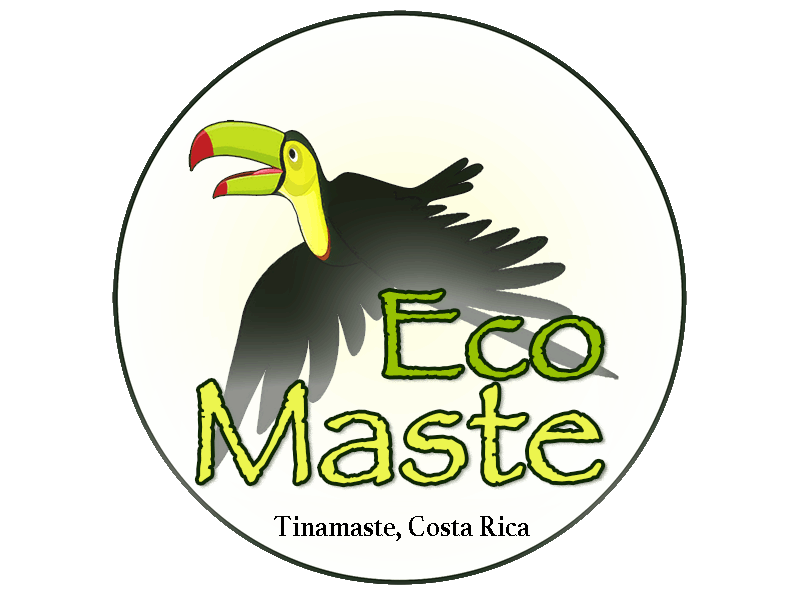Syntropic Farming
- Amanda Luna
- May 10, 2022
- 4 min read
Recently the Ecomaste family took a course at Rancho Mastatal with Thiago from Syntropic Solutions to expand their understanding of Syntropic Farming. This blog will go over some of the major takeaways.

To begin to talk about Syntropic Farming first let’s get an understanding of Entropy. Entropy is movement of energy from a complex form to a more simple form. Energy is dispersed and lost in the process going from order to chaos. Snytropy is energy movement from simple to complex. Energy accumulates moving towards order.
Syntropic Farming Foundations:
Principles/ Processes-*These never change
-There is a natural guiding force moving towards more complexity-snytropy, abundance, stability
-We are a part of a unified intelligence
-We are here to optimize the natural life processes
Ground cover
Maximize photosynthesis
Natural Succession
Stratification (light)
Management
Structure
Need a basic structure to perform a function
Context
Circumstance, time, resources, location, climate, mission, purpose
Systems
Create Systems to:
Maximize photosynthesis
High density planting
Proper Stratification (Light)
Time and space
Length x width
Covering soil, nutrient cycling
Biomass tree
Heavy mulching
Living ground cover
Syntropic Bed Basics
Placenta I- Veggies/herbs that fulfill function after 6 months-radishes, eggplant, salad greens, (plant densely) The seeds that don’t mature become food for other plants and increase biomass of the soil.
Placenta 2- Plants/ Fruits take up to 2 years to reach maturation-bananas, pineapples, papaya, moringa
Secondary 1-Fruits/ that take up to 5-10 years to reach maturation Guanabana, Jaboticaba, Pitanga,
Secondary 2- Fruits/Trees reach maturation in 10-15 years eucalyptus, avocado, mango, Madera Negro
Climax- Crops/Trees reach maturation in 20-40 years Roble de Sabana, Coffee, cashew

Clearing to Clearing
Is a key concept to understand. This idea is rooted around that everything in nature is a cycle. For example, Forests
they have their origin of simplicity from bacteria and fungi.
This is the colonization of systems which -Optimizes life processes and quantity and quality of consolidated life.
Then there is an accumulation of systems- More complex systems of life, insects, amphibians, birds, rodents, nutrient plant life.
The momentum continues and reaches the abundance of systems- the most complex systems of life big mammals, and densely nutrient food.
In Forests the ideal structure is density closer to the ground (ground cover) and low density at the top so photosynthesis is maximized. Once the Climax of the forest is reached the forest will start clearing.
System of accumulation
One accumulates and ends “clears” and the next one begins.
Plant life cycle
Seed to seeds… young to old “senseis” decaying and slows the system coming to an end. Plants give the best fruits at their end of their cycle.
How does this happen? When the structure of the forest starts to get out of alignment you will notice that vines will come and take over trees, winds, and other natural disturbances happen. You could think of this as nature’s pruning. The feld trees if left alone will decompose and the colonization of systems continues, following by the accumulation of systems and finally the abundance of systems.
No competition of plants
They occupy the same space at different times. When they grow together, they help each other
The key is to take the time to understand the specific plant in terms of function, life cycle, how to:
Maximize photosynthesis
Natural Succession
Stratification (light)
Management
Recap
From clearing to clearing, natural force (syntropy). Towards complexity, balance, accumulation of energy.
Humans are here to mimic the process and speed it up so we can use the system already in place!
Ecophysiology of plants
Functions
Certain plants draw energy in different times of the year and also give.
Synchronizing
Given the right environment each plant will grow at their rate and respect all other plants while doing their function
Benefits of Syntropic Farming
Increased land use.
Early harvests constant yields
More gains more saving
Applicable from small to large scale
The beautiful thing about Syntropy for us is it helped view both the micro and macro applications of this ideology.

Macro Applications
Observe and support our ecosystems. We can follow specific principles and processes that don’t change. The structure does vary to a degree but this is depends on the context. Through doing this we will optimize life processes. Moving in the natural direction of life itself from simple to complex life. Creating more abundance, life for external and internal ecosystems.
Micro Applications
How can be also observe our own inner ecosystems?
What we need to survive, basic needs will never change. Food, water, shelter, rest.
To thrive the list grows; food, water,
shelter, rest, love, creativity, passion etc.
The structures of these will vary depending on your own context. To discover your own context you must also inner-stand yourself as an individual.
Think Ecophysiology of people: at specific times we draw in more energy and at certain times we share this energy.
Holistic Observation- leads to knowing ourselves what are our needs, desires, skills, temperaments, constitutions, preferences in terms of THRIVING. We must accept that we are NATURE. We can nurture ourselves in a way to optimize our own growth and others growth while all doing a specific and uniquely needed function. Do you see the pattern? More abundance, life, and harmony for both our internal and external ecosystems!
Know thyself what is each living being good at doing? Find out and feed that!
In nature nothing is sustainable-its regenerative- we don’t just want to sustain we want to THRIVE!








Comments